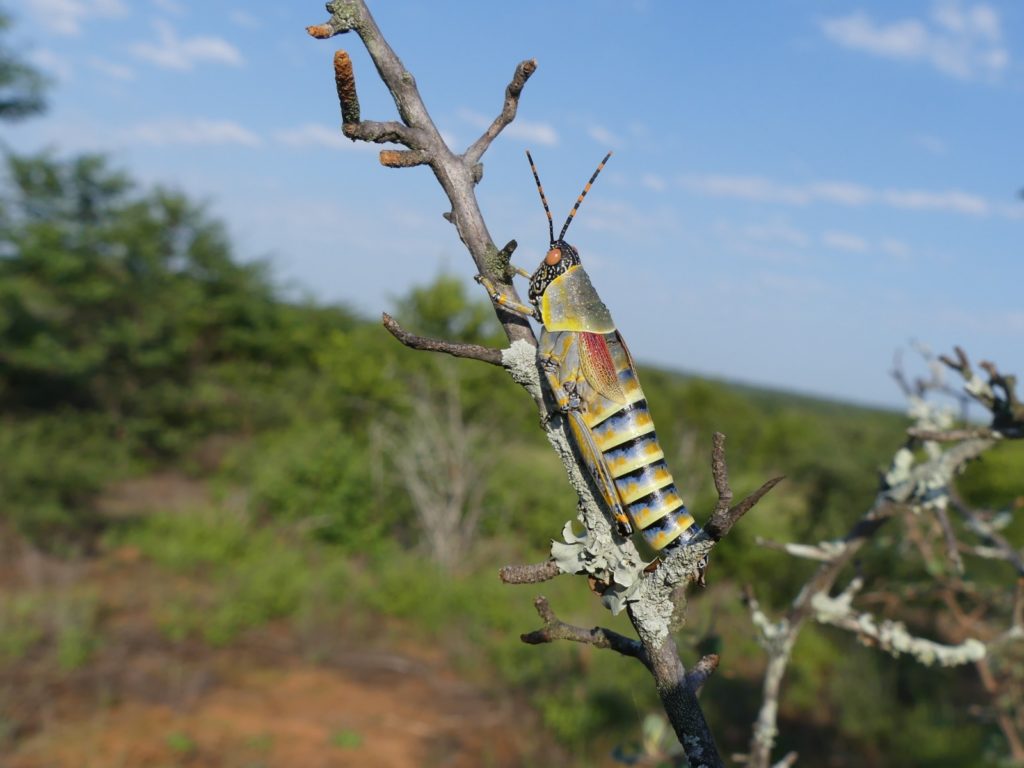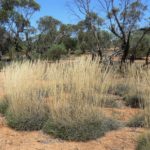Aposematic coloration
The ‘Elegant Grasshopper’ (Zonocerus elegans) occurs commonly throughout Southern Africa and is mentioned due to its aposematic coloration, typical for animals that want to announce that they are poisonous. And he is a poisonous grasshopper.

In the case of Zonocerus elegans, its poisonous properties are based on its favorite foods, milkweed, and bitter apple. The ingested toxins of these plants accumulate in the grasshopper’s body. When disturbed by an inexperienced predator, they will produce a frothy substance with distasteful and toxic properties. This concept worked for Zonocerus elegans so well that most of them lost the ability to fly, and a recessive gene took over and adapted the grasshoppers accordingly.

This example of an insect with aposematic coloration was chosen to remind us that many species of insects, including locusts, are still staple foods for many African societies. Still, common sense should be applied to avoid collecting and eating conspicuously colored species.

Lessons learned about aposematic coloration
- Don’t handle or even eat aposematic-colored insects or amphibians.
- Conspicuously colored fish (mostly reef fish) can be eaten during the year’s cooler months.
- Colorful birds can also be eaten, but some studies suggest that naturally colored birds taste better.
.




